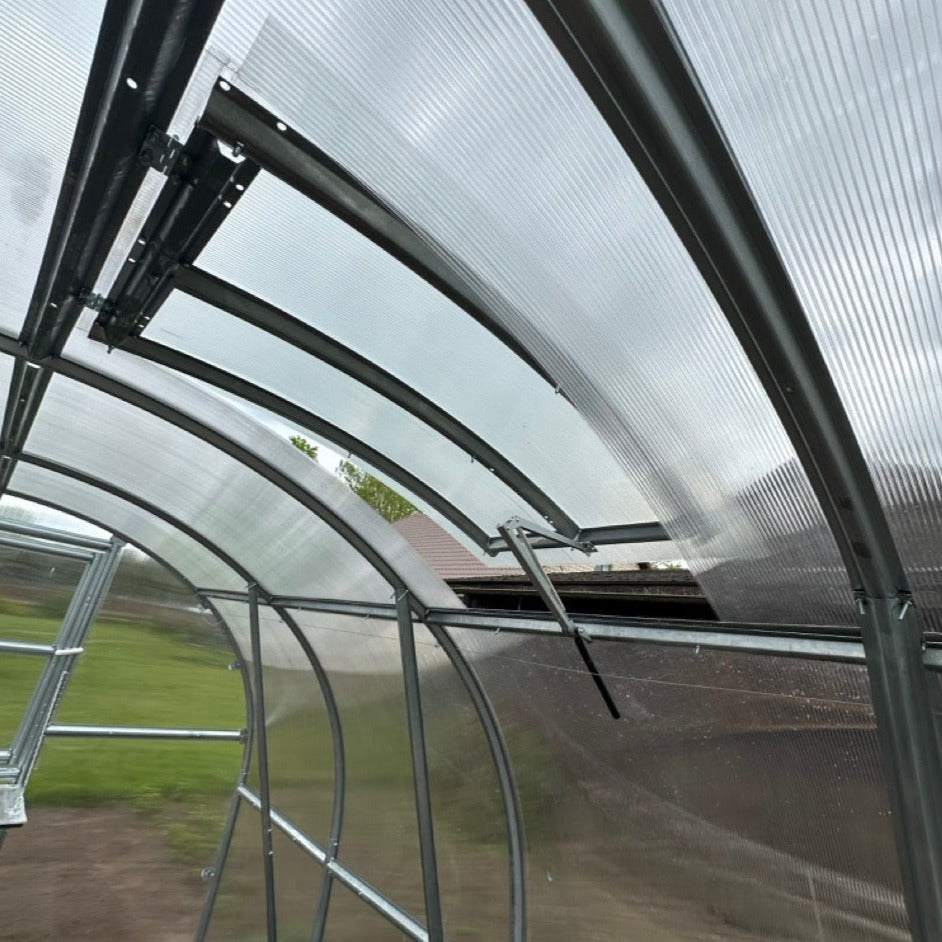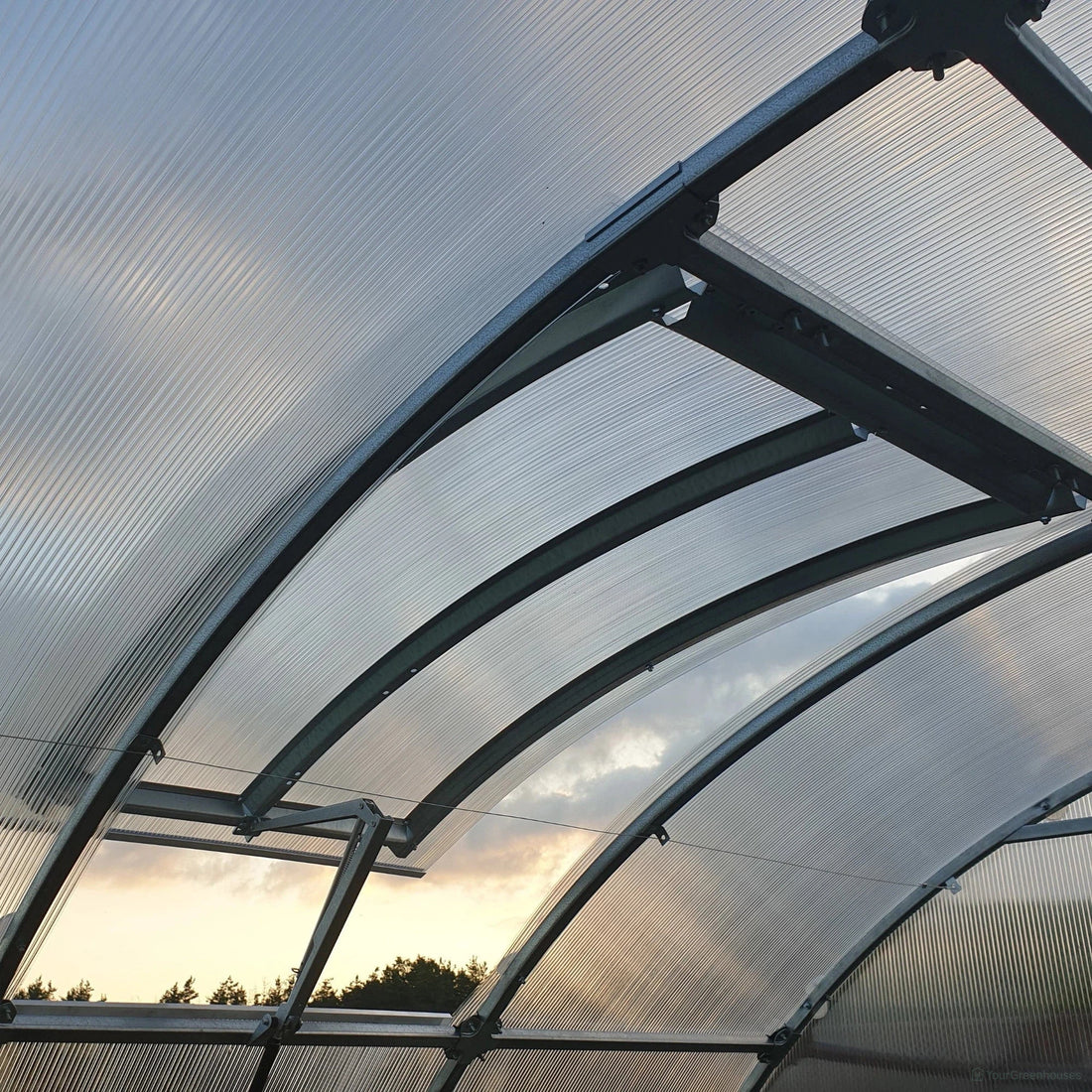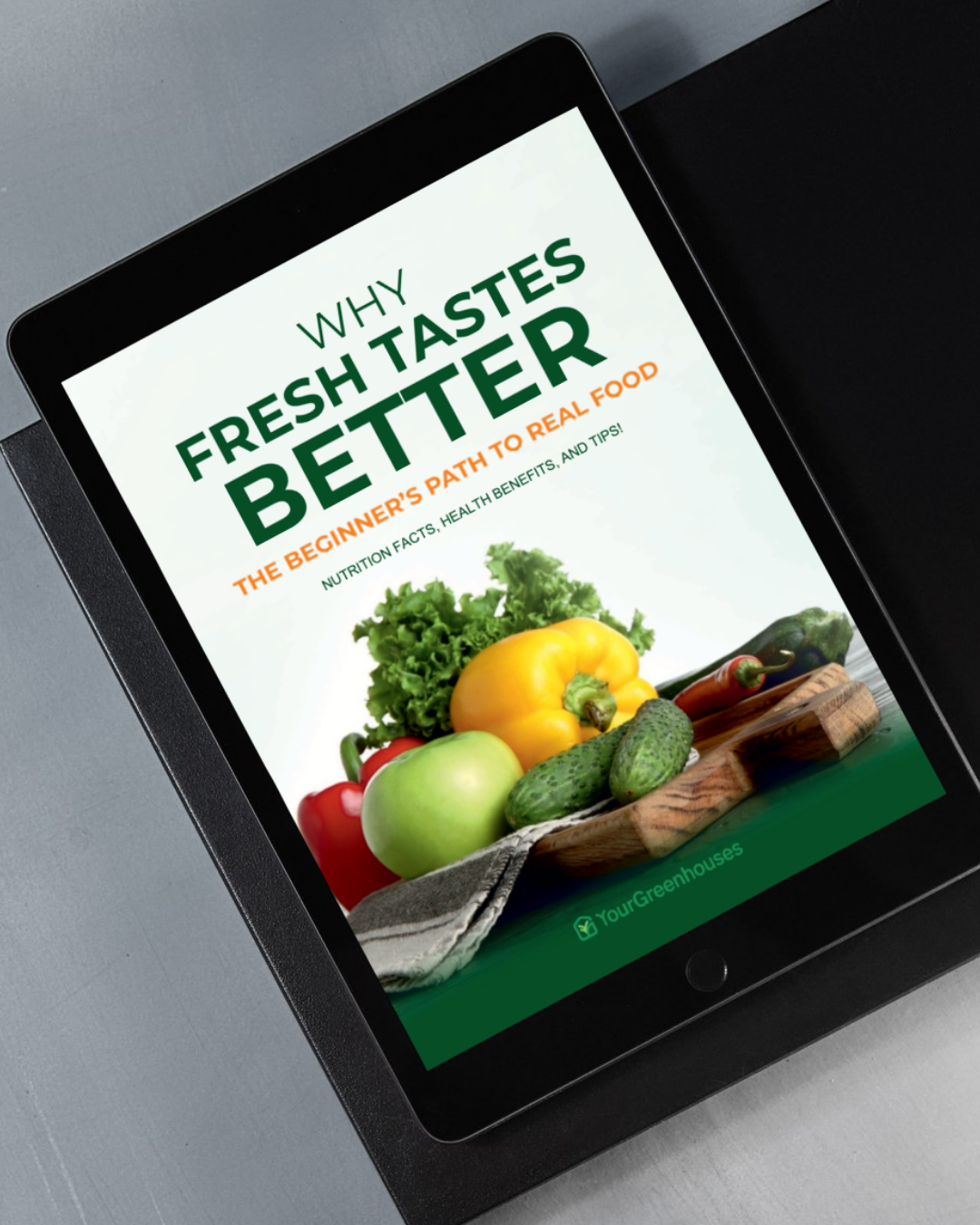Growing Vegetables in a Greenhouse: Tips and Tricks for a Successful Harvest
In recent years, growing vegetables in greenhouses has gained substantial popularity among both hobbyists and commercial growers alike. Greenhouse cultivation offers numerous advantages, providing a controlled environment that extends the growing season, protects crops from adverse weather conditions, and enables precise management of factors such as temperature, humidity, and light exposure.
This method not only enhances crop yield and quality but also promotes sustainable agriculture by minimizing water usage and reducing the reliance on chemical pesticides. As interest in local fresh produce continues to rise, understanding the principles and techniques of greenhouse vegetable cultivation becomes increasingly relevant.
In this article, we’ll explore the best techniques and tips to help you successfully grow vegetables in your greenhouse.
Cultivation Techniques

Soil Preparation and Management
The soil in your greenhouse should be rich in nutrients and well-draining. You can achieve this by adding compost or well-rotted manure to the soil. The recommended ratio is one part compost to three parts soil. You must also ensure that the soil pH is between 6.0 and 7.0. Test your soil regularly and adjust the pH as necessary using lime or sulfur.
Seeding and Planting
When seeding, use high-quality seeds and plant them at the recommended depth. Keep the soil moist but not waterlogged. Once the seeds have germinated, thin them out to prevent overcrowding. When planting, ensure that the plants are spaced adequately and have enough room to grow. It’s best to plant in the early morning or late afternoon to avoid exposing the plants to the midday sun.
Watering and Nutrition
Water your plants regularly, but avoid overwatering, which can lead to root rot. It’s advisable to water in the morning or early evening when the temperature is cooler. Nutrients are also required for plant growth. Use a balanced fertilizer and follow the manufacturer's instructions for application. You can also use organic fertilizers such as compost tea or fish emulsion.
Pest and Disease Control
Prevention is key in pest and disease control. Keep your greenhouse clean and free of debris. Inspect your plants regularly for signs of pests or disease. If you find a problem, act quickly to prevent it from spreading. There are many organic pest control options available, such as neem oil or insecticidal soap. If using chemical pesticides, follow the instructions carefully and use them sparingly.
Optimizing Growth Conditions

Temperature and Humidity Control
Maintaining optimal temperature and humidity levels is one of the most important aspects of growing vegetables in a greenhouse. Most vegetables thrive in temperatures between 60-80°F (15-27°C) and humidity levels of 50-70%. However, different vegetables have different temperature and humidity requirements, so research the specific needs of the vegetables you're growing.
One way to control temperature and humidity is using a thermostat and humidistat. A thermostat will turn on heating or cooling systems when the temperature falls outside the desired range, while a humidistat will turn on humidifiers or dehumidifiers when the humidity levels are too high or low.
Another way to optimize temperature and humidity is through proper ventilation. Ventilation systems can help regulate temperature and humidity by allowing fresh air to circulate throughout the greenhouse. You can achieve this using fans, vents, or windows.
Lighting and Shade Management
While most vegetables require at least 6 hours of sunlight daily, some may require more or less depending on their specific needs. If your greenhouse doesn’t receive enough natural sunlight, you can use artificial lighting to supplement.
Shade management is also vital, especially during hot summer months. Too much direct sunlight can cause plants to overheat and dry out. Using shade cloth or applying a reflective coating to the greenhouse can help regulate the amount of sunlight that enters.
Harvesting and Storage

Harvesting Techniques
When harvesting vegetables in a greenhouse, you can use a few techniques to get the most out of your plants. One method is to harvest vegetables when they are at their peak ripeness. This will ensure they are at their most flavorful and have the highest nutritional content. You can use a sharp knife or scissors to cut the vegetables off the plant, being careful not to damage it.
Another technique is to harvest vegetables regularly. This will encourage the plant to produce more vegetables and prevent over-ripening, which can cause the vegetables to become less flavorful. Additionally, harvesting regularly will help prevent disease and pest infestations.
Post-Harvest Handling and Storage
After harvesting your vegetables, handle and store them properly to ensure they stay fresh and flavorful. Clean the vegetables thoroughly, removing any dirt or debris. You can do this by rinsing them under cold water or using a vegetable brush.
Once the vegetables are clean, store them in a cool, dry place. Some vegetables, like tomatoes and peppers, can be stored at room temperature, while others, like leafy greens, should be stored in the refrigerator. Remember to store the vegetables separately, as some give off ethylene gas, which can cause others to ripen and spoil more quickly.
You can also consider preserving your veggies through canning, freezing, or drying to extend their life. Doing so will allow you to enjoy your homegrown vegetables even after the growing season.
Tips for Beginners Starting a Vegetable Greenhouse
Starting a vegetable greenhouse can be a challenging but rewarding experience. Here are some essential tips for beginners:
- Choose the Right Location: Select a location for your greenhouse that receives ample sunlight throughout the day. Ensure it has good drainage and is protected from strong winds.
- Select the Right Vegetables: Choose vegetables that are well-suited for greenhouse growing and that you enjoy eating. Some popular options include tomatoes, cucumbers, peppers, lettuce, spinach, and herbs like basil and cilantro.
- Invest in Quality Equipment: Invest in a good quality greenhouse structure that provides adequate ventilation, insulation, and light transmission. Also, consider essential equipment like heating systems, fans, irrigation systems, and shelving or benches for organizing your plants.
- Start with Quality Soil: Use high-quality soil or potting mix that is well-draining and nutrient-rich. Consider adding compost or other organic matter to improve soil fertility.
- Monitor Temperature and Humidity: Install a thermometer and hygrometer in your greenhouse to monitor temperature and humidity levels. Many vegetables thrive in specific temperature and humidity ranges, so creating and maintaining optimal conditions is crucial.
- Water Properly: Provide consistent watering to your vegetables, keeping the soil evenly moist but not waterlogged. Consider using drip irrigation or a watering schedule to ensure the plants receive adequate moisture without overwatering.
- Control Pests and Diseases: Keep an eye out for common greenhouse pests like aphids, whiteflies, and spider mites, as well as diseases like powdery mildew and damping-off. Implement integrated pest management strategies, such as using beneficial insects, practicing crop rotation, and keeping the greenhouse clean and debris-free.
- Prune and Support Plants: Regularly prune your vegetable plants to remove dead or diseased foliage and encourage healthy growth. Provide support, such as stakes or trellises, for vining plants like tomatoes and cucumbers to prevent them from sprawling and improve air circulation.
- Fertilize Regularly: Vegetables grown in containers or greenhouse beds may require regular fertilization to replenish nutrients. Use a balanced fertilizer or organic amendments according to the needs of your specific plants.
- Stay Consistent and Learn: Growing vegetables in a greenhouse requires patience, consistency, and a willingness to learn from both successes and failures. Keep detailed records of your gardening activities and observations to help refine your techniques and improve your harvests over time.
Frequently Asked Questions
What vegetables thrive best inside a greenhouse?
Greenhouses provide an ideal environment for growing a wide variety of vegetables. However, some vegetables thrive better than others. Vegetables that require warm temperatures, such as tomatoes, peppers, cucumbers, and eggplants, are ideal for greenhouse cultivation. Other vegetables that can be grown in a greenhouse include lettuce, spinach, kale, and herbs.
How do I create a planting schedule for my greenhouse?
When creating a planting schedule for your greenhouse, you should consider the growth rate of each vegetable, the time of year, and the amount of light and temperature required. Start by listing the vegetables you want to grow and their growth rates. Then, determine the best time to plant each vegetable based on the length of the growing season and the amount of light and temperature required.
What are the best practices for growing vegetables in a greenhouse during winter?
Growing vegetables in a greenhouse during the winter requires extra care and attention. You should insulate your greenhouse to retain heat and regulate the temperature. Additionally, you should use grow lights to supplement natural light and give your vegetables the necessary light to germinate. You should also consider using a heating system to maintain a consistent temperature.
Are there any vegetables that should not be grown in a greenhouse?
While most vegetables can be grown in a greenhouse, some are unsuitable for greenhouse cultivation. Vegetables that require bee pollination, such as squash, pumpkins, and watermelons, may not be suitable for greenhouse cultivation. Additionally, root vegetables such as carrots and potatoes may not be ideal for greenhouse cultivation as they require a lot of space to grow.
Can a small greenhouse be productive for vegetable cultivation?
Yes, a small greenhouse can be productive for vegetable cultivation. You can grow various vegetables, including tomatoes, peppers, lettuce, and herbs, in a small greenhouse. However, you should consider the space limitations and plan accordingly. You may need to use containers or vertical gardening techniques to maximize space.
Maximize Sustainability Through Greenhouse Vegetable Cultivation
As society grapples with population growth, climate change, and limited arable land, adopting greenhouse technologies represents a promising solution to bolster global food production while preserving natural resources. Through ongoing research, innovation, and widespread adoption, cultivating vegetables in greenhouses holds immense potential to revolutionize modern agriculture and shape a more sustainable future for future generations.
Ready to transform your backyard into a thriving vegetable garden? Click here to Invest in our state-of-the-art greenhouse, and start your journey to fresh, homegrown vegetables today!












